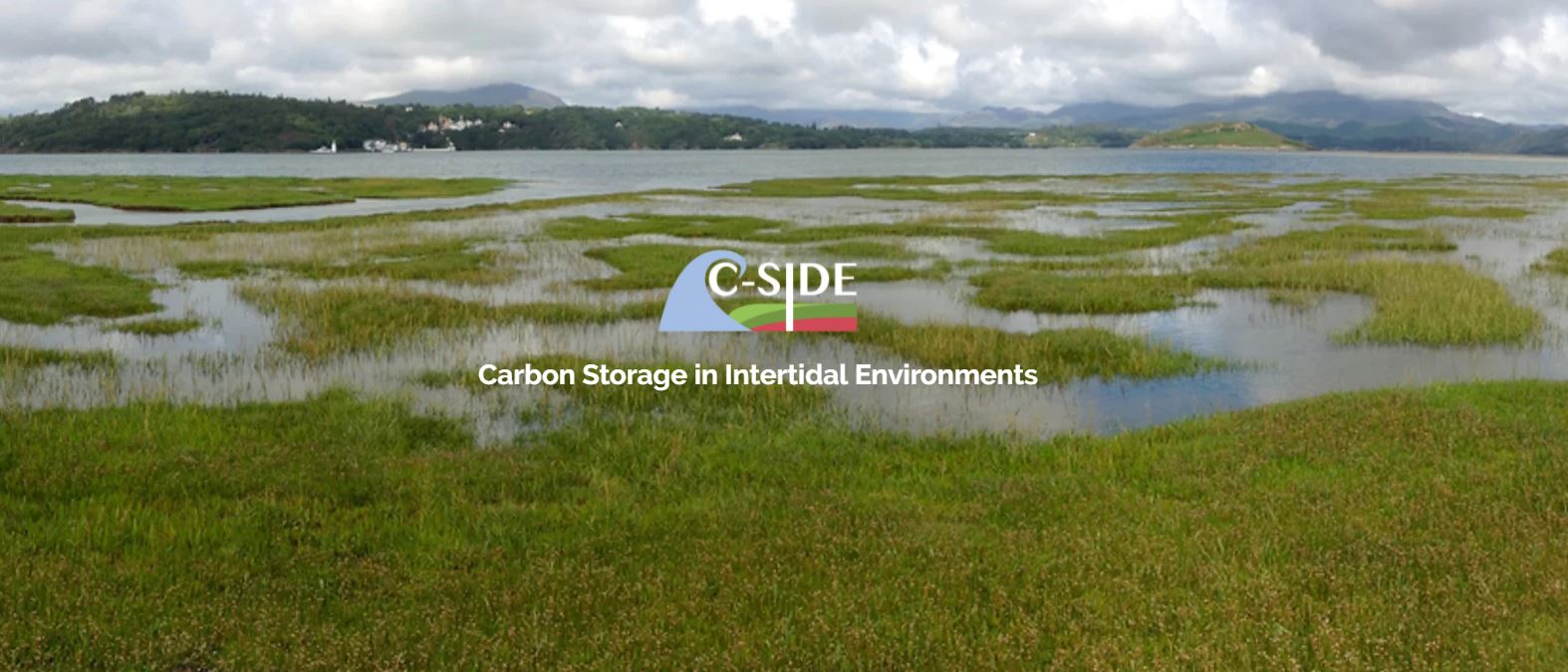
Carbon storage in intertidal environments (C-SIDE)
This NERC funded C-SIDE project brings together a multidisciplinary team of researchers across five organisations to deliver discovery science that informs policy via an integrated study of "Blue" Carbon in UK salt-marsh habitats.
Context
Saltmarshes are coastal wetlands that are flooded and drained by salt water brought in by the tides. The soil may be composed of deep mud and peat. Because saltmarshes are frequently submerged by the tides and contain a lot of decomposing plant material, oxygen levels in the peat can be extremely low. Salt marshes occur worldwide, particularly in middle to high latitudes. Thriving along protected shorelines, they are a common habitat in estuaries. These intertidal habitats are essential for healthy fisheries, coastlines, and communities.
Blue carbon is simply the term for carbon captured by the world's ocean and coastal ecosystems. Sea grasses, mangroves, and saltmarshes along our coast "capture and hold" carbon, acting as a carbon sink. These coastal systems, though much smaller in size than the planet's forests, sequester this carbon at a much faster rate, and can continue to do so for millions of years. Most of the carbon taken up by these ecosystems is stored below ground. The carbon found in coastal soil is often thousands of years old.
Key aims and objectives
The C-SIDE project is striving to produce the first large-scale empirical study of salt-marsh carbon storage, accretion rates, its drivers and the long-term stability/resilience of these stores. The outcomes of the work will provide practical guidance for coastal managers and inform shoreline policy to safeguard carbon storage in the intertidal zone.
Research Outputs
Smeaton, C., Barlow, N.L. and Austin W.E.N., 2020. Coring and compaction: Best practice in blue carbon stock and burial estimations. Geoderma, 364.
Harvey, R.J., Garbutt, A., Hawkins, S.J. and Skov, M.W., 2019. No detectable broad-scale effect of livestock grazing on soil blue-carbon stock in salt marshes. Frontiers in Ecology and Evolution, 7, p.151.
Ladd, C.J.T, Duggan-Edwards, M.F, Bouma, T.J, Pagès, J.F, Skov, M.W, 2019, Sediment supply explains long‐term and large‐scale patterns in saltmarsh lateral expansion and erosion, Geophysical Resarch Letters.
Marley, A.R.G, Smeaton, C. and Austin, W.E.N, 2019, An assessment of the tea bag index method as a proxy for organic matter decomposition in intertidal environments, Journal of Geophysical Research: Biogeosciences.
Burden, A, Garburt, A and Evans, C.D, 2019, Effect of restoration on saltmarsh carbon accumulation in Eastern England, Biology Letters, 15: 20180773.
Related links
To find out more visit the Carbon storage in intertidal environments (C-SIDE) website
Professor Roland Gehrels, Head of Environment & Geography Deptarment
Bill Austin (PI, St Andrews)
Martin Skov (PI, Bangor University)
Roland Gehrels (PI, University of York)
Anette Burden (PI, CEH)
Natasha Barlow (Co-I, University of Leeds)
Angus Garbutt (Co-I, CEH)
Laurence Jones (Co-I, CEH)
David Paterson (Co-I, St Andrews)
Rob Mills (Co-I, University of York)
Natural Environment Research Council (NERC)
Related links
To find out more visit the Carbon storage in intertidal environments (C-SIDE) website